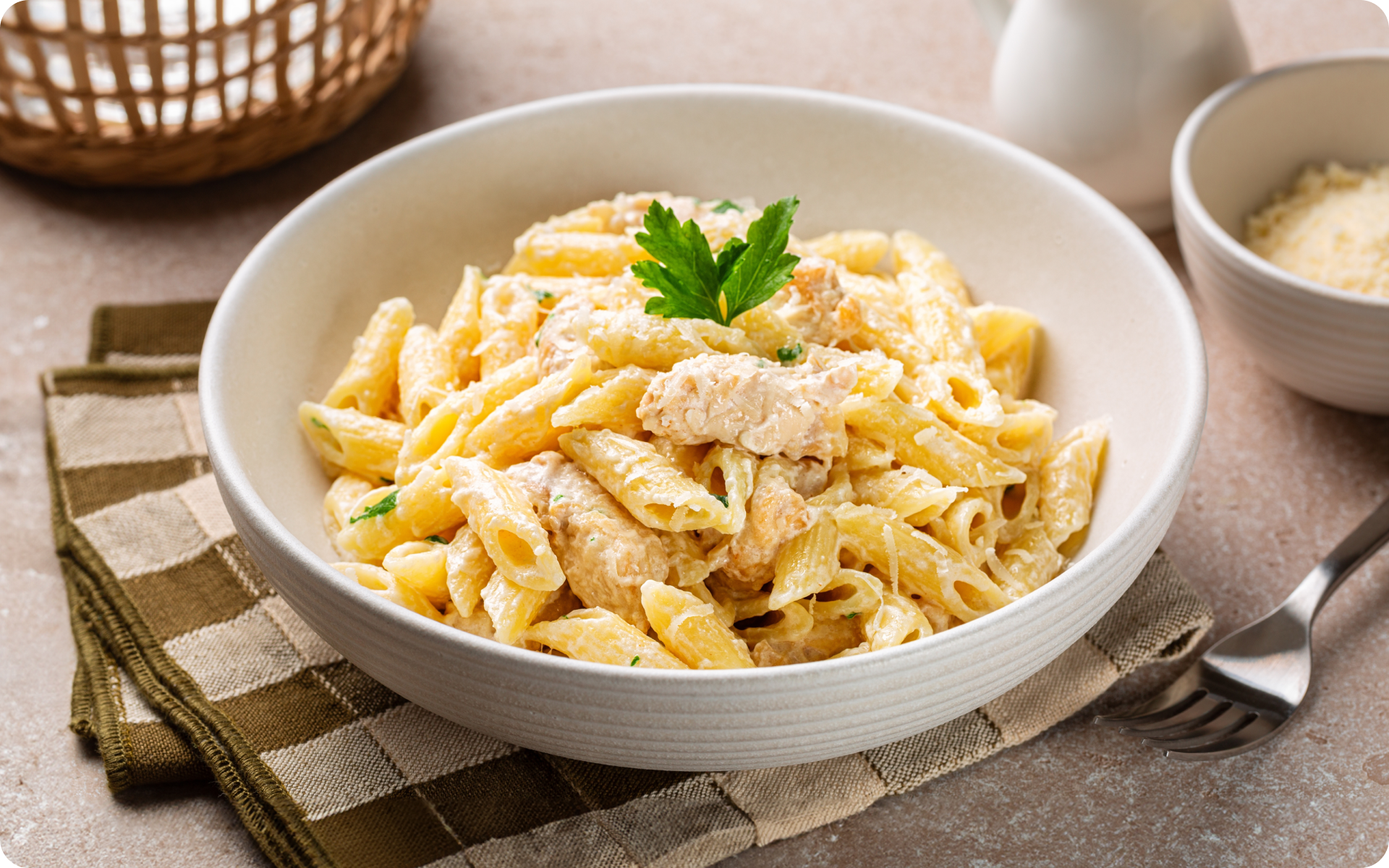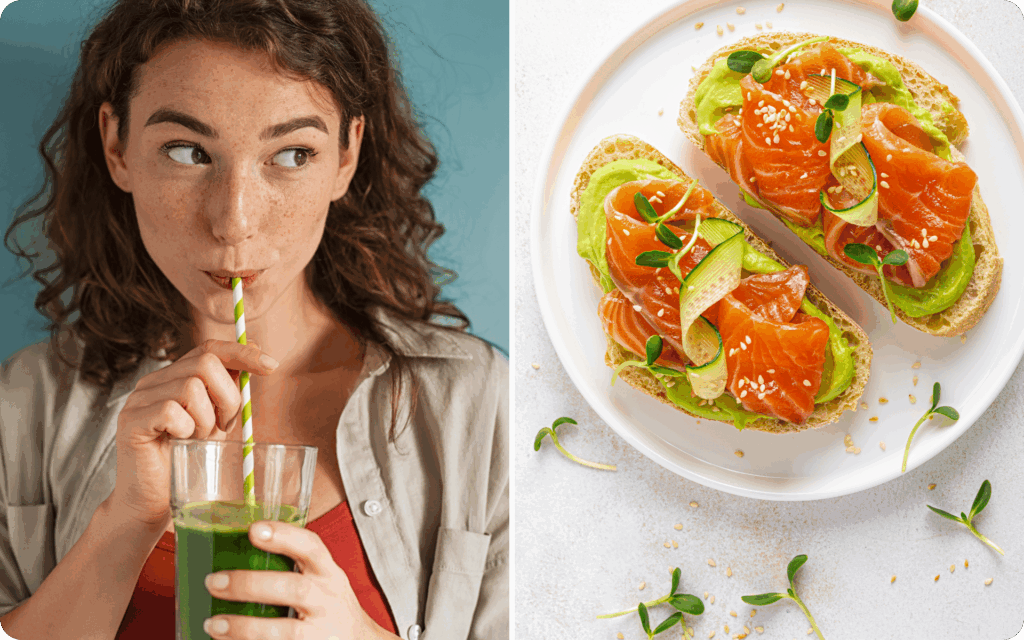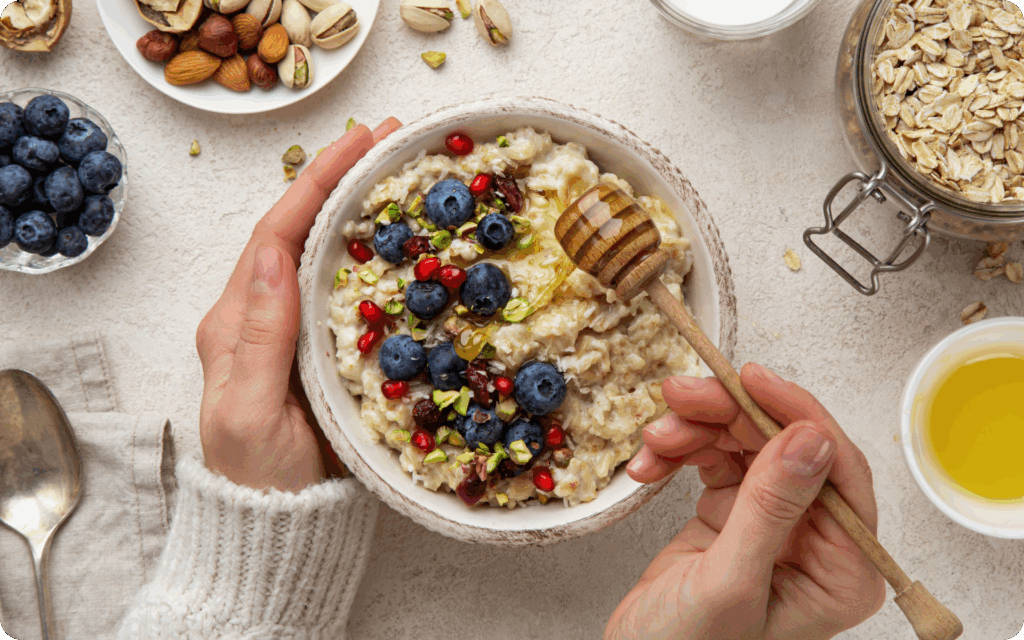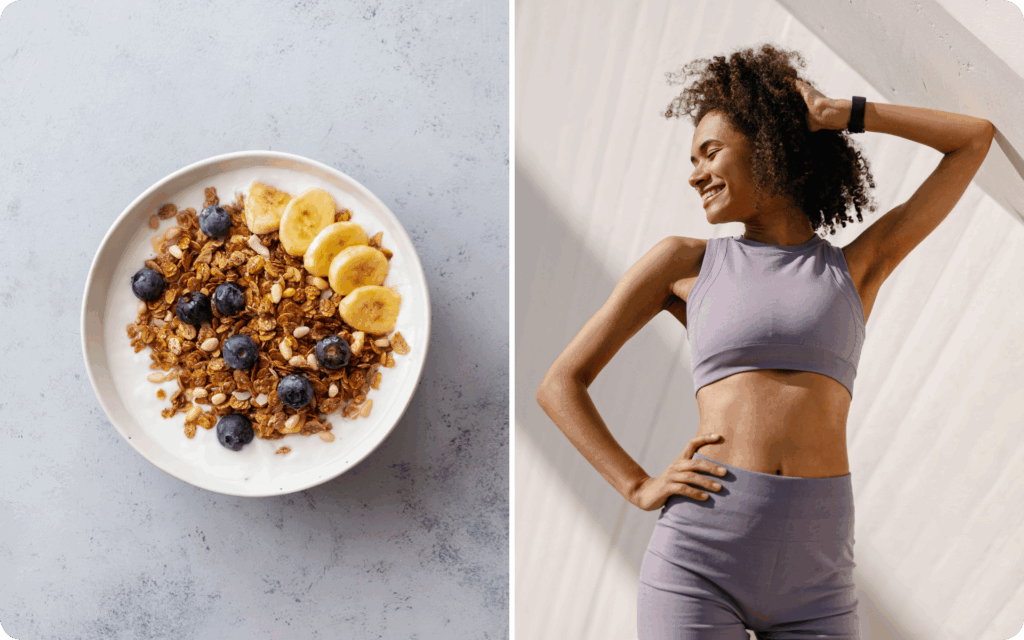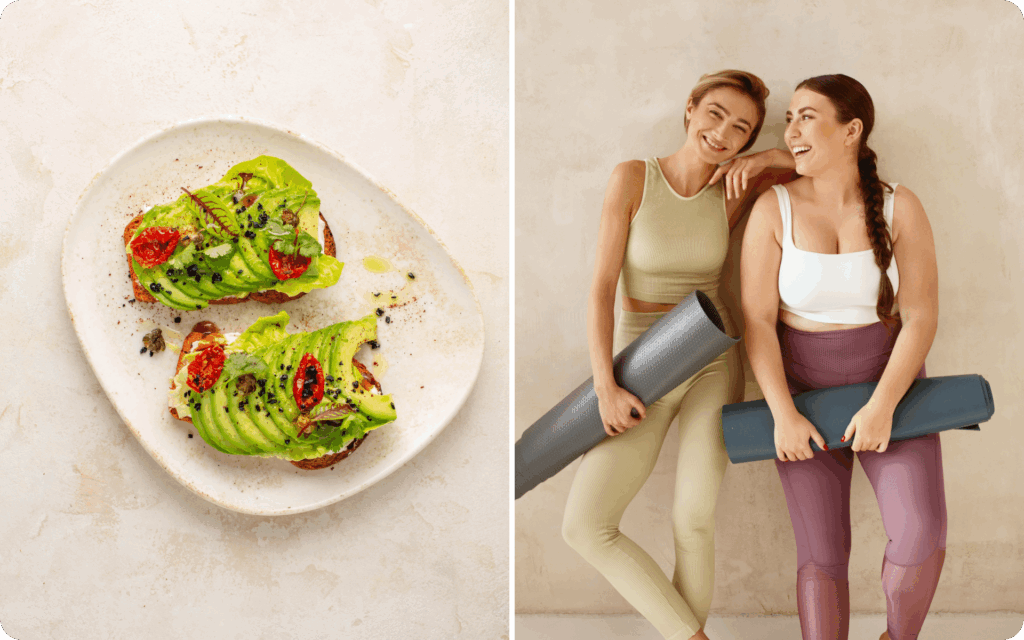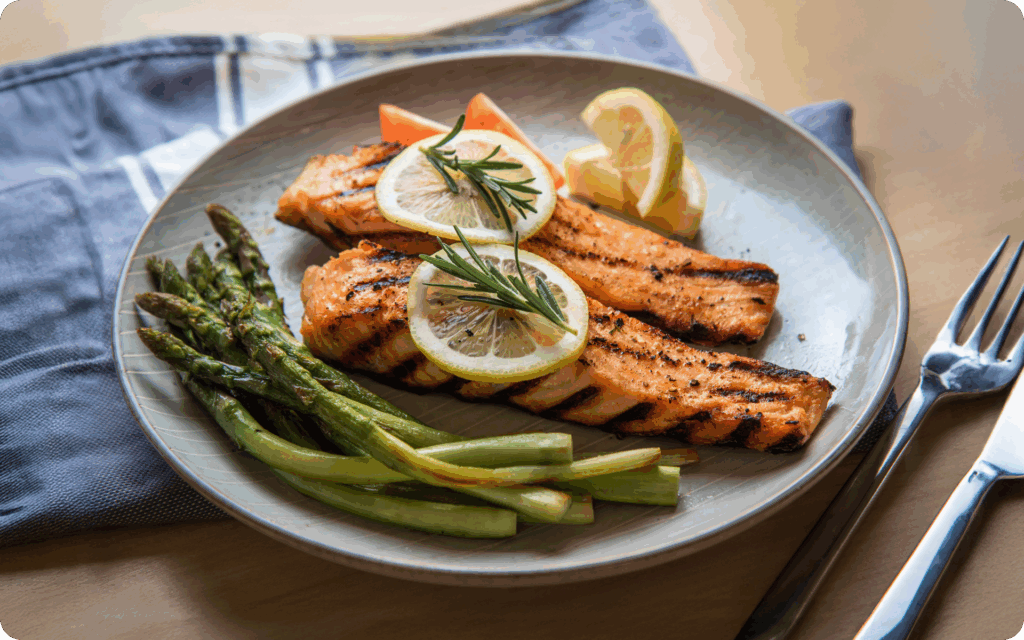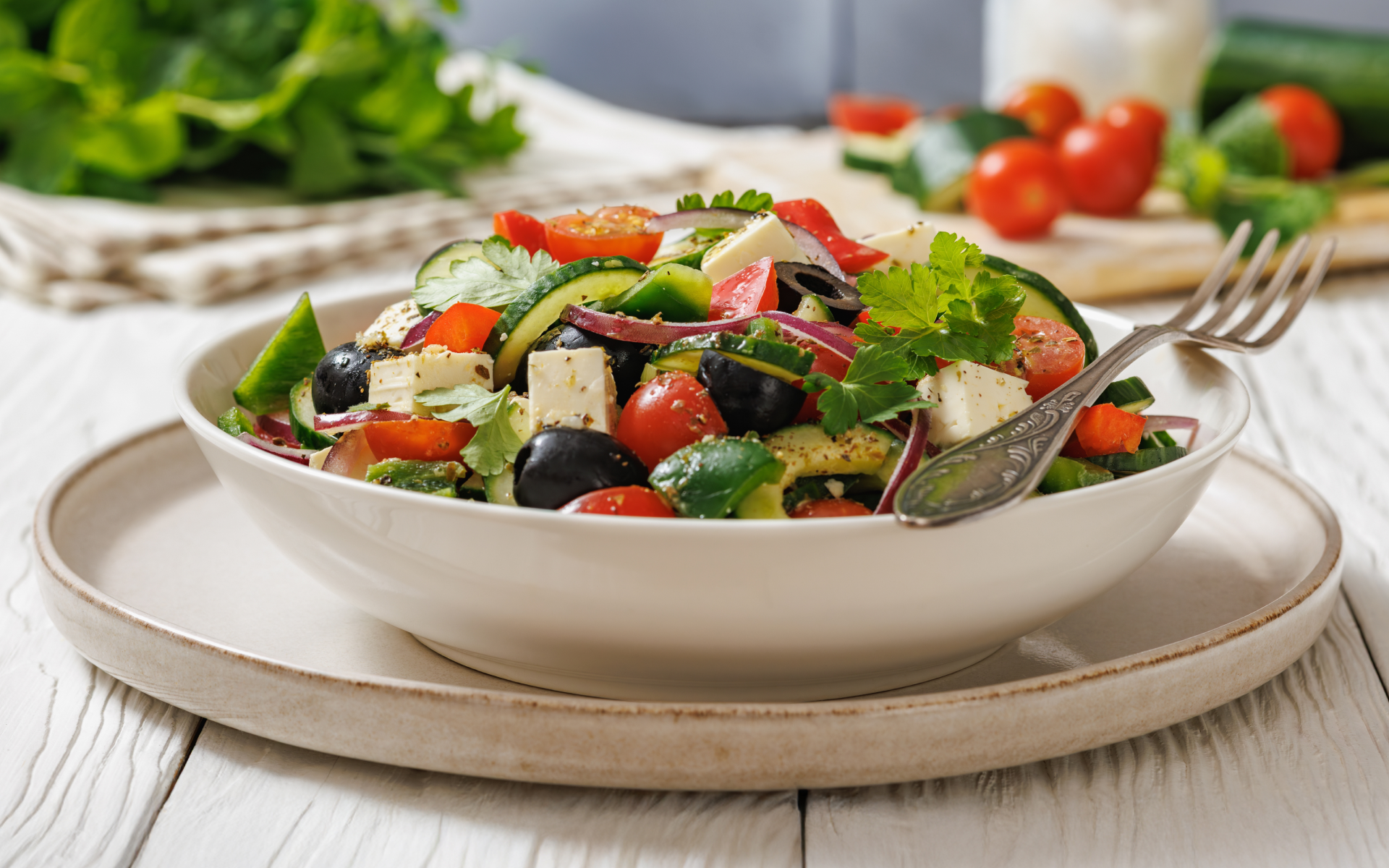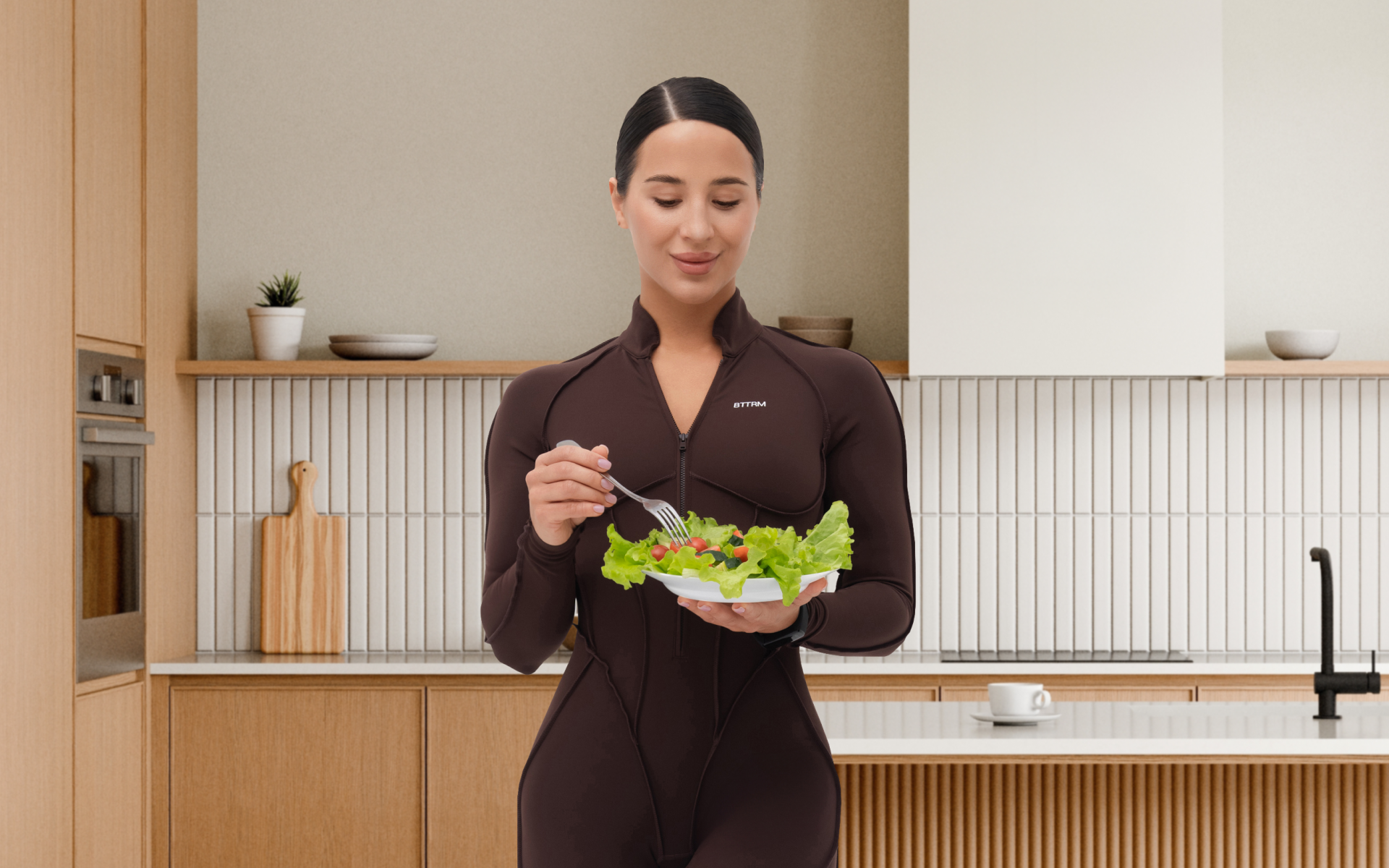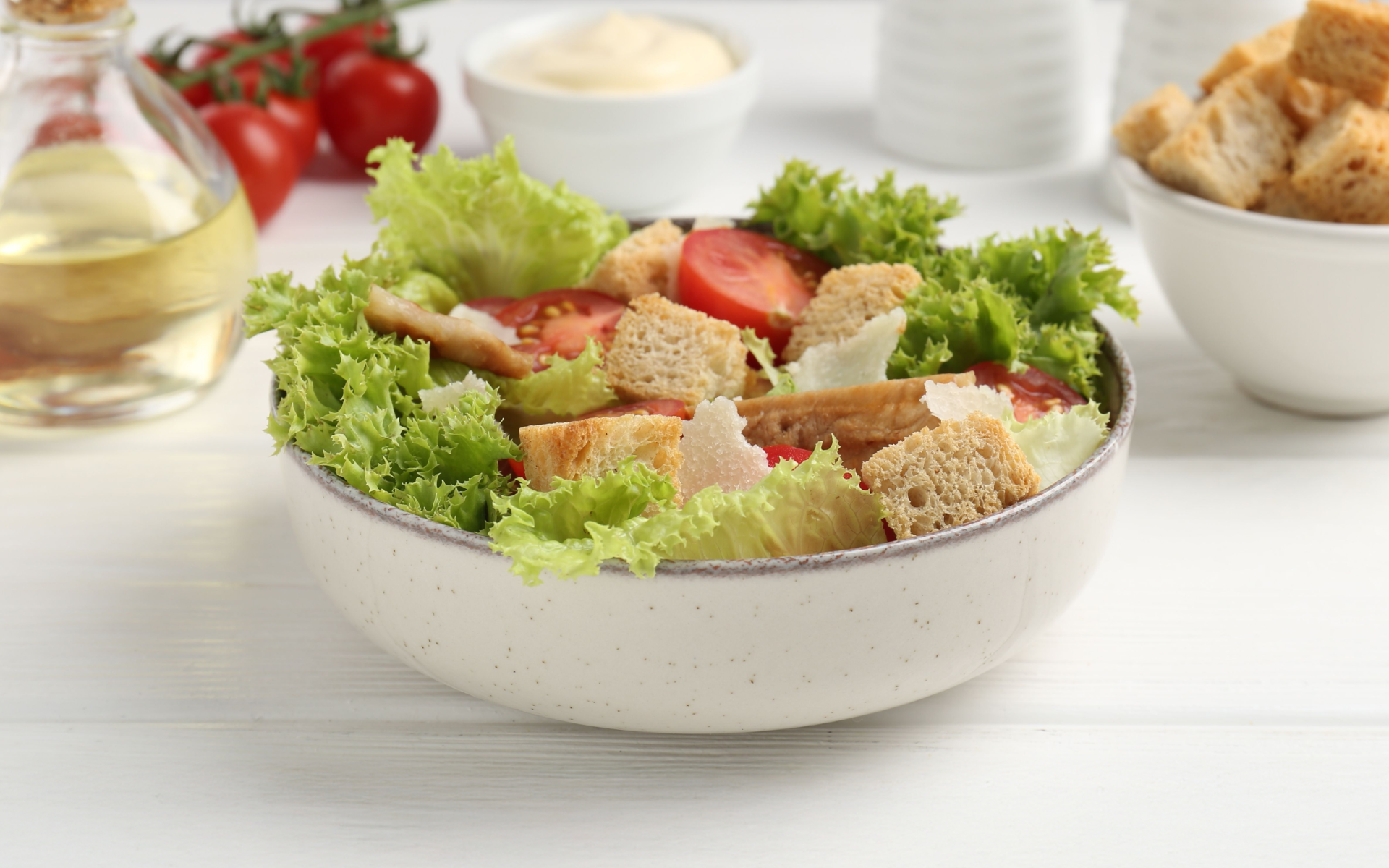When it comes to getting in shape, you need three key components:
- A regular workout routine
- A balanced diet
- Staying consistent.
But if it’s that simple, why do you feel like you can’t get the perfect physique?
Your fitness meal plan is probably the trickiest to nail down, mainly because everyone’s caloric and macronutrient needs differ.
So, what is a smart fitness meal plan?
One thing to consider is that to lose weight, you need to stay in a caloric deficit; to gain weight, you need to stay in a caloric surplus; and to boost muscle gains, you should prioritize protein. In this guide, we’ve created a basic meal plan that you can tailor to your specific needs, along with expert tips and tricks to optimize your performance.
Can A Fitness Meal Plan Work For Weight Loss And Muscle Gain?
Yes, a fitness meal plan for women or men can help you lose weight and boost muscle mass by incorporating a surplus of protein and a strength training routine, a process known as “body recomposition.”
The key is to create a moderate caloric deficit (burn slightly more calories than you consume) and maintain a high protein intake (1.6 to 2.4 g per kilogram of body weight) (1).
You can distribute your daily protein sources across meals to maximize the results (2).
Studies suggest that restricting calories and increasing protein intake can improve physical function and reduce excess body fat. Alongside physical activity, such as resistance training, you can lose weight while still improving muscle strength (1).
Studies demonstrate that combining calorie restriction with a protein surplus can promote improvements in body composition by preserving lean muscle mass and reducing excess body fat.
This practical nutritional approach (also known as maintaining a calorie deficit with a focus on protein) suits anyone who has just started training and experienced fitness enthusiasts (3).
That said, there isn’t a “correct” amount of carbs or fats to aim for that works for everyone. As long as you’re hitting your protein requirements, you can fill the rest of your calories with complex carbohydrates and dietary fats in whatever ratio feels best for you, within the generally recommended ranges, which are very wide.
Some people feel full of energy on a lower-fat, higher-carb ratio, while others feel sluggish with high-carb intake. Experiment and see what feels best for you. If you’re curious about losing weight vs losing fat, check out our earlier article.
Read more: Healthy Fitness Meals to Fuel Your Workout Every Day
How To Customize A Fitness Meal Plan For Your Workout Style?
Wondering what to eat in a day for optimal energy and performance?
- Your fitness meal plan should begin with a high-protein breakfast to fuel your body before entering a state of functional work.
- Additionally, keep your lunch lean and light to maintain high energy levels.
- Snacks and dinner are equally important, featuring healthy, nutritious dishes rich in bioavailable protein that are both satisfying and filling.
Day 1
- Breakfast: Scrambled eggs with spinach, bell peppers, and a side of whole-wheat toast with avocado.
- Lunch: Vegetable fried rice with fish and Greek salad.
- Dinner: Lean ground turkey patty with broccoli and roasted sweet potatoes.
- Snack: Dried fruits and seeds.
Day 2
- Breakfast: Overnight oats with berries and a bowl of seasonal fruit.
- Lunch: Grilled chicken with brown rice and tomato salad.
- Dinner: Chicken breast or tofu with quinoa and a vegetable salad.
- Snack: Steamed edamame.
Day 3
- Breakfast: Whole-grain bread with cheese, seeds, and Greek Yogurt,
- Lunch: Green salad with chicken and dressing.
- Dinner: Ground beef with steamed vegetables and low-calorie pasta.
- Snack: Protein ice cream.
Day 4
- Breakfast: Scrambled eggs spread on whole-wheat toast with protein shake.
- Lunch: Lentil soup with whole-grain rolls and tomato salad.
- Dinner: Lean ground turkey stir-fried with brown rice and mixed vegetables, like snap peas, carrots, onions, and bell peppers.
- Snack: Granola bars with cranberries and almonds.
Day 5
- Breakfast: Apple, peanut butter smoothie with whey protein.
- Lunch: Herbed pork tenderloin with steamed baby peas and roasted potatoes.
- Dinner: Pumpkin oat pancakes.
- Snack: Cottage cheese with sliced apples.
Day 6
- Breakfast: Boiled eggs with steamed vegetables, like broccoli, carrots, and bell peppers.
- Lunch: Whole-wheat pasta with chicken and white beans and a green salad.
- Dinner: Broiled fish with brown rice and mixed green salad.
- Snack: Celery sticks with hummus.
BetterMe is your fast-track ticket to long-lasting weight loss! Tailor your fitness journey and maximize your results with just a couple of swipes!
Day 7
- Breakfast: Patty sandwich on whole-grain bread with a side of fruits.
- Lunch: Lemon-basil chicken with roasted broccoli and quinoa pilaf.
- Dinner: Butternut squash curry soup with lentils.
- Snack: Apple slices with nut butter.
Read More: 7-Day Healthy Meal Plan For Weight Loss — One Week Of Healthy Eating Made Easy.
What’s The Ideal Protein Intake In A Fitness Meal Plan?
The recommended protein intake is 0.8 grams per kilogram of body weight, or about 0.36 grams per pound. This amount is the bare minimum of protein your body needs to function and avoid deficiencies; it’s not a target for optimal health and performance (4).
The actual protein target, however, differs for each individual.
Some studies suggest that consuming 1.2 to 1.6 grams of top-quality protein per kilogram of body weight is an optimal range, as found in foods such as eggs, yogurt, cottage cheese, and lean meats. This protein intake can be an efficient target range for optimal health in some adults (5).
There are also cases where consuming diets with up to 2.4 g per kilogram of body weight proved more effective than a diet containing 1.2 g (per kg of body weight) for increasing lean body mass and losing fat mass.
This protein surplus in a gym diet plan for muscle gain can be an effective strategy for supporting high-volume exercise and resistance training practitioners (1).
But, as a general rule, each meal should contain at least 25-30 g of protein, including breakfast. Your first meal of the day can promote muscle growth and supply the body with energy.
When maximizing your protein intake, health experts recommend incorporating protein-rich ingredients into your meals, such as protein shakes, cottage cheese, protein bars, edamame, chickpeas, and hard-boiled eggs (6). To learn more about the high-protein meal plan for muscle gain, check out our in-depth article on the topic.
Should Your Fitness Meal Plan Change On Rest Days?
Even on your rest days, your fitness meal plan doesn’t require a complete overhaul, although you can adjust your calorie intake slightly depending on your goals.
The primary goal is to maintain consistency and consume a steady stream of the following food groups:
- Protein
- Healthy fats
- Complex carbohydrates
- Vitamins and minerals
- A balance of dietary fiber
Cutting calories can help burn excess weight, while protein and complex carbohydrates can promote muscle recovery and optimal function (7).
When you increase your protein intake, it’s also essential to prioritize physical fitness.
Not only does it create a more positive mindset, but it can also enhance:
- Muscle gain
- Sleep quality
- Digestion
- Circulation
- Overall posture.
These benefits are all key components of a well-designed fitness plan (8).
The BetterMe app can generate workouts, routines, and meal plans that fit your goals.
Equipped with various recipes, the app can create a personalized routine that doesn’t get boring. You can set the type of workout you prefer, such as whole-body, strength, muscle gain, cardio, with a mix of dietary strategies to boost your muscle gains.
The BetterMe app can help you establish a routine and offer tips on achieving your goals. Our previous post goes into great detail about the clean eating meal plan.
What Are The Biggest Mistakes In Fitness Meal Plans?
Here are some common mistakes to avoid when drafting your first diet and exercise plan:
- Making extreme, sudden changes. The new diet becomes unsustainable if you suddenly switch to a very meticulous or strict diet after eating without limits for a long time. The body needs time to build a new habit, so slowly reduce the calories or make changes week by week.
- Chasing complexity instead of consistency. People often seek the “perfect program” and try to overcomplicate the meals by obsessing over macro percentages and over-tracking their calories. It’s best to stick to simple, effective meals that balance nutrients. The BetterMe app can streamline your process, so you don’t have to stress about your weekly progress.
- Jumping from one diet plan to another. You must be patient. Pick a solid meal plan and commit to it for at least 8-12 weeks, then track the progress. If you don’t see results, then make adjustments or change course.
- Drinking extra calories. It’s easy to overconsume most fortified drinks, milkshakes, smoothies, and nutritional supplements, which can add more calories. While most drinks are not inherently “bad”, consuming more calories than you burn can make you gain some weight.
BetterMe will keep you laser-focused on your weight loss journey! Nutrient-packed meal plans, fat-blasting workouts, galvanizing challenges and much more. Try using the app and see for yourself!
How To Make A Fitness Meal Plan Sustainable Long-Term?
To create a sustainable fitness meal plan for weight loss, follow these steps:
Step 1: Include A Balance Of Macronutrients
Your food should include a variety of lean proteins, healthy fats, and complex carbohydrates.
For example, you can:
- Add yogurt bowls or golden flax seeds in smoothies to promote digestion.
- Have more lean proteins, such as tofu, edamame, grilled turkey, or salmon, to aid muscle repair.
- Cook complex carbohydrates in batches, like brown rice, quinoa, or sweet potatoes, to accommodate a busy schedule.
- Include nutritious snacks, such as protein bars, seeds, or nuts, to eat on the go.
Step 2: Rotate Your Protein Sources
Switch your protein sources across meals, like legumes, chicken, fish, or eggs.
You can also rotate the vegetables to add different textures, colors, and vitamins, and experiment with seasonings to create unique flavors. This way, each dish can feel more special and enjoyable. Just make sure to use ingredients you prefer to avoid stomach discomfort.
Step 3: Build Discipline
Consistency is a critical component for maintaining a fitness-oriented meal plan.
For example, you can create a 7-day plan to track your progress and avoid overindulgence.
To stay consistent, you can:
- Schedule your meal times.
- Do weekly meal prep.
- Add more protein to your meals, such as protein powder or peanut butter.
- Set a reminder to drink water and avoid skipping breakfast, lunch, or dinner.
- Leave some space for flexibility and include snacks to curb cravings.
Step 4: Cook With Healthy Fats
To obtain a steady source of energy and fuel your exercise routine, focus on healthy unsaturated fat-rich ingredients, such as:
- Olive oil
- Mackerel
- Salmon
- Almonds
- Nut butter
- Chia seeds
- Avocado oil spray
Step 5: Measure Your Progress
Track the weekly changes in body composition, weight loss, and muscle gain.
Take note of how you feel after every meal to ensure you get a steady source of energy.
The BetterMe app can track your meals, macronutrients, and calories, and provide quality workouts tailored to your routine.
Most people consume 1-2 eggs per day, but when you are building muscle, you might have 2-3 whole eggs with a balanced diet, such as complex carbs, dietary fiber, and omega-3 fatty acids. Most healthy people don’t need to worry about eggs and dietary cholesterol, in reasonable amounts. If you have a history of or are at a high risk for heart disease, check with your doctor for personalized recommendations. Yes, you can have a full-course meal after a workout. Consume balanced meals that include complex carbohydrates, lean protein, and healthy fats to replenish your energy stores and support muscle repair. Yes, you can make vegetarian meals and still gain muscle. Milk, cottage cheese, legumes, tofu, and edamame are some of the best sources of protein. Consider adding some oatmeal and smoothies for optimal energy and performance. Hand-pick the food you eat. For example, if you go to a restaurant, choose dishes with high-quality ingredients and swap some of the appetizers or side dishes with ingredients that serve your fitness goals. For example, choose whole wheat bread or brown rice instead of white bread or white rice (when possible).Frequently Asked Questions
How many eggs should I eat per day?
Can I eat immediately after exercise?
Can a fitness meal plan be vegetarian?
How to dine out on a fitness meal plan?
The Bottom Line
Whether you are gaining muscle, losing weight, or working on different parts of your body, your fitness meal plan should consist of meals that create a calorie deficit, a protein surplus, a variety of nutrients, and dishes you find enjoyable.
The meals shouldn’t feel restrictive. Instead, choose ingredients you like to eat so that you can create a sustainable eating habit.
For breakfast, aim to consume at least 25-30 grams of protein and diversify the rest of your meals with high-quality protein sources.
DISCLAIMER:
This article is intended for general informational purposes only and does not serve to address individual circumstances. It is not a substitute for professional advice or help and should not be relied on for making any kind of decision-making. Any action taken as a direct or indirect result of the information in this article is entirely at your own risk and is your sole responsibility.
BetterMe, its content staff, and its medical advisors accept no responsibility for inaccuracies, errors, misstatements, inconsistencies, or omissions and specifically disclaim any liability, loss or risk, personal, professional or otherwise, which may be incurred as a consequence, directly or indirectly, of the use and/or application of any content.
You should always seek the advice of your physician or other qualified health provider with any questions you may have regarding a medical condition or your specific situation. Never disregard professional medical advice or delay seeking it because of BetterMe content. If you suspect or think you may have a medical emergency, call your doctor.
SOURCES:
- Higher compared with lower dietary protein during an energy deficit combined with intense exercise promotes greater lean mass gain and fat mass loss: a randomized trial (2016, nih.gov)
- Dietary protein distribution positively influences 24-h muscle protein synthesis in healthy adults (2014, nih.gov)
- Effects of high-protein diets on fat-free mass and muscle protein synthesis following weight loss: a randomized controlled trial (2013, nih.gov)
- How much protein do you need every day? (2023, health.harvard.edu)
- Protein “requirements” beyond the RDA: implications for optimizing health (2016, nih.gov)
- The Benefits of 30 Grams of Protein at Breakfast (2019, uada.edu)
- Optimizing Athletic Performance and Post-Exercise Recovery: The Significance of Carbohydrates and Nutrition (2023, researchgate.net)
- Physical Exercise: An Overview of Benefits From Psychological Level to Genetics and Beyond (2021, nih.gov)
